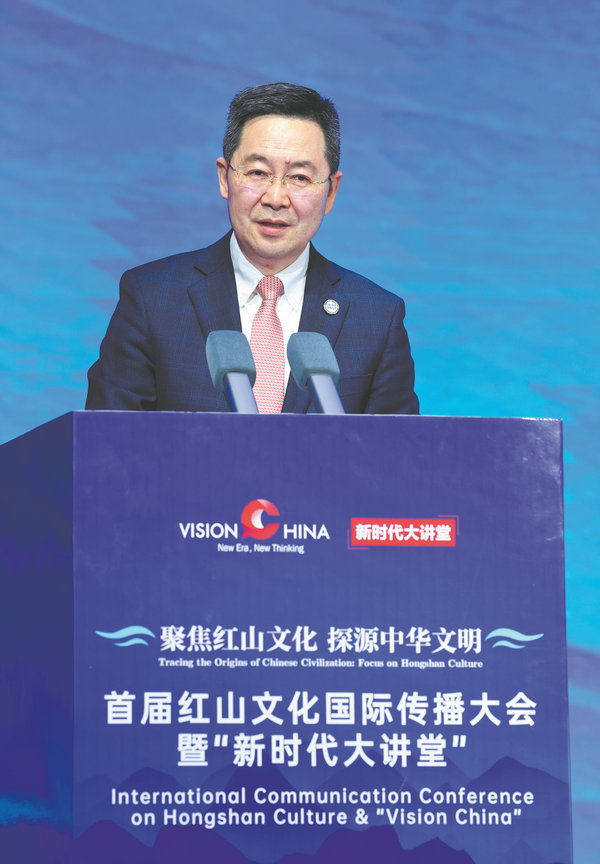A timeless beacon still shines bright


Chinese civilization stands as a unique spiritual symbol of the nation with its long history and profound depth, Qu Yingpu, publisher and editor-in-chief of China Daily, said at the International Communication Conference on Hongshan Culture and Vision China event held on Saturday in Chaoyang, Northeast China's Liaoning province.
Themed "Tracing the Origins of Chinese Civilization: Focus on Hongshan Culture", the event explored one of the earliest known Chinese cultures and its role in shaping the country's cultural and spiritual heritage.
Qu noted that efforts to trace the origins of civilizations have deepened public understanding of both human cultural development and the distinctive characteristics of Chinese civilization.
"In the process of tracing our roots, we are expanding our knowledge of human cultural history and gaining a deeper understanding of the spiritual essence of Chinese civilization," he said.
Highlighting the importance of cultural diversity in today's world, Qu said that virtually every country and region, and thousands of ethnicities, have contributed to a rich mosaic of civilizations. This diversity is a shared treasure of humanity, and it is our collective responsibility to protect, promote and pass it on.
He emphasized that the Chinese nation has long drawn strength from adversity and continually renewed itself through exchanges and mutual learning with other civilizations.
Citing Hongshan culture as a prime example, Qu said the Neolithic culture is widely recognized for its sophisticated jade craftsmanship, early religious and ritual sites, and advanced pottery techniques.
He explained that many key elements of Chinese civilization — such as reverence for dragons, the cultural significance of jade and the traditional practices of worshiping heaven, honoring the earth and respecting ancestors — can all be found in Hongshan culture.
"The West Liaohe River basin, together with the Yellow and Yangtze river basins, is one of the important cradles of Chinese civilization," he said. "Among the many shining stars of early Chinese cultures, Hongshan stands out for its brilliance."
He added that core values derived from this ancient culture — such as the worldview of harmony between humanity and nature, the Confucian ideal of being "as gentle as jade", and a spirit of openness and inclusiveness — remain central to Chinese society today.
Qu also underscored the significance of the Niuheliang archaeological site in Chaoyang, a representative site of Hongshan culture. "Niuheliang is not only a geographical landmark but also a cultural symbol — a place where the waters of life flow, and cultural connections converge," he said.
Looking ahead, Qu called for expanded research and deeper interpretation of Hongshan culture, with the aim of transforming the wisdom and values embedded in traditional Chinese culture into a language that resonates globally.
"We must build a recognizable system of Chinese cultural symbols to help the world better understand China and the spiritual world of the Chinese people," he said.
He also advocated for the use of modern technologies to bring ancient stories to life.
"Unraveling the mysteries of ancient civilizations requires collaboration among scholars and the support of emerging technologies," he said.
"We should harness tools like artificial intelligence to tell our ancestors' stories in vivid, contemporary and engaging ways, making ancient culture visible, audible and tangible. Let the treasures of Hongshan culture and other fine elements of traditional Chinese culture shine at the fingertips of global audiences."





































